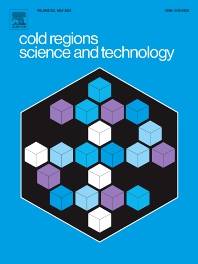Journals in Environmental geology
Journals in Environmental geology
- ISSN: 0375-6742
Journal of Geochemical Exploration
Journal of Geochemical Exploration is mostly dedicated to publication of original studies in exploration and environmental geochemistry and related topics.Contributions considered of prevalent interest for the journal include researches based on the application of innovative methods to:define the genesis and the evolution of mineral deposits including transfer of elements in large-scale mineralized areas.analyze complex systems at the boundaries between bio-geochemistry, metal transport and mineral accumulation.evaluat... effects of historical mining activities on the surface environment.trace pollutant sources and define their fate and transport models in the near-surface and surface environments involving solid, fluid and aerial matrices.assess and quantify natural and technogenic radioactivity in the environment.determin... geochemical anomalies and set baseline reference values using compositional data analysis, multivariate statistics and geo-spatial analysis.assess the impacts of anthropogenic contamination on ecosystems and human health at local and regional scale to prioritize and classify risks through deterministic and stochastic approaches.Papers dedicated to the presentation of newly developed methods in analytical geochemistry to be applied in the field or in laboratory are also within the topics of interest for the journal.Submission of studies presenting results related with global and continental-wide geochemical prospecting activities and review articles covering topics of interest for a broad international audience is also encouraged specially when accompanied by cartographic products.To ensure high quality of both the peer review process and the published papers, associate editors are assigned to individual submissions in accordance with their own expertise.
- ISSN: 0165-232X
Cold Regions Science and Technology
Cold Regions Science and Technology is an international journal dealing with the science and technical problems of cold environments in both the polar regions and more temperate locations. It includes fundamental aspects of cryospheric sciences which have applications for cold regions problems as well as engineering topics which relate to the cryosphere.Emphasis is given to applied science with broad coverage of the physical and mechanical aspects of ice (including glaciers and sea ice), snow and snow avalanches, ice-water systems, ice-bonded soils and permafrost.Relevant aspects of Earth science, materials science, offshore and river ice engineering are also of primary interest. These include icing of ships and structures as well as trafficability in cold environments. Technological advances for cold regions in research, development, and engineering practice are relevant to the journal. Theoretical papers must include a detailed discussion of the potential application of the theory to address cold regions problems. The journal serves a wide range of specialists, providing a medium for interdisciplinary communication and a convenient source of reference.Please see below the areas of research that the Editor in Chief and Associate Editors lead on, with support from members of the Editorial Board.Sea ice and arctic marine technology - Prof. Jukka TuhkuriSnow and snow avalanche - Dr. Nicolas Eckert & Dr. Betty SovillaFrozen soil, frozen rocks and permafrost - Prof. Jilin Qi & Prof. Mingyi ZhangRiver ice - Prof. Mark LoewenAtmospheric icing - Dr. Krzysztof Szilder
- ISSN: 0009-2819
Geochemistry
Geochemistry (formerly known as Chemie der Erde or as International Journal for Chemical Topics of the Geosciences) is one of the oldest journals for geochemistry-related topics. Geochemistry publishes original research papers, short communications, reviews of selected topics, and high-class invited review articles addressed at broad geosciences audience. Publications dealing with interdisciplinary questions are particularly welcome. Young scientists are especially encouraged to submit their work. The journal offers entry into the world of international scientific communication and promotes interdisciplinary discussion on chemical problems in a broad spectrum of geosciences.The following topics are covered by the expertise of the members of the editorial board (see below):Cosmochemistr... meteoriticsIgneous, metamorphic, and sedimentary petrologyVolcanology... & high temperature geochemistryBiogeoch... - theoretical - field related studiesMineralogy - crystallographyEnvir... geosciencesArchaeome...